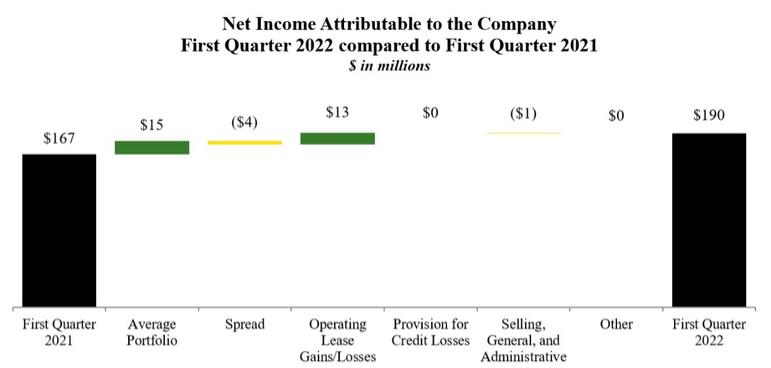markets). Additionally, liquidity may be provided through loans from John Deere. The Company’s commercial paper outstanding at January 30, 2022, October 31, 2021, and January 31, 2021 was $490.0 million, $662.9 million, and $299.9 million, respectively, while the total cash, cash equivalents, and marketable securities position was $666.3 million, $679.1 million, and $624.7 million, respectively. The amount of cash, cash equivalents, and marketable securities held by foreign subsidiaries was $164.3 million, $158.0 million, and $124.0 million at January 30, 2022, October 31, 2021, and January 31, 2021, respectively.
The Company has a revolving warehouse facility to utilize bank conduit facilities to securitize retail notes (see Note 5). The facility was renewed in November 2021 with an expiration in November 2022 and a reduction of the total capacity or “financing limit” from $2,000.0 million to $1,000.0 million. As a result of the reduced capacity, the Company repurchased $511.1 million of outstanding short-term securitization borrowings in November 2021, in addition to the normal monthly liquidations as a result of payments collected on the retail notes. At January 30, 2022, $899.4 million of securitization borrowings were outstanding under the facility. At the end of the contractual revolving period, unless the banks and the Company agree to renew, the Company would liquidate the secured borrowings over time as payments on the retail notes are collected.
During the first three months of 2022, the Company issued $1,799.3 million and retired $1,302.4 million of long-term external borrowings, which primarily consisted of medium-term notes. During the first three months of 2022, the Company also retired $1,122.6 million of retail note securitization borrowings and maintained an average commercial paper balance of $955.7 million. At January 30, 2022, the Company’s funding profile included $568.6 million of commercial paper and other notes payable, $3,473.8 million of securitization borrowings, $5,306.4 million of notes payable to John Deere, $26,670.5 million of unsecured term debt, and $4,652.2 million of equity capital. The Company’s funding profile may be altered to reflect such factors as relative costs of funding sources, assets available for securitizations, and capital market accessibility.
Total interest-bearing indebtedness amounted to $36,019.3 million at January 30, 2022, compared with $37,319.9 million at October 31, 2021 and $34,677.3 million at January 31, 2021. Total external short-term indebtedness amounted to $10,146.4 million at January 30, 2022, compared with $11,093.2 million at October 31, 2021 and $9,952.4 million at January 31, 2021. Total external long-term indebtedness amounted to $20,566.5 million at January 30, 2022, compared with $20,607.3 million at October 31, 2021 and $19,497.5 million at January 31, 2021. Total notes payable to John Deere amounted to $5,306.4 million at January 30, 2022, compared with $5,619.4 million at October 31, 2021 and $5,227.4 million at January 31, 2021. The ratio of total interest-bearing debt, including securitization indebtedness, to stockholder’s equity was 7.7 to 1 at January 30, 2022, compared with 8.2 to 1 at October 31, 2021 and 8.0 to 1 at January 31, 2021.
Lines of Credit
The Company has access to bank lines of credit with various banks throughout the world. Some of the lines are available to both the Company and Deere & Company. Worldwide lines of credit totaled $8,078.7 million at January 30, 2022, $5,865.2 million of which were unused. For the purpose of computing the unused credit lines, commercial paper and short-term bank borrowings, excluding secured borrowings and the current portion of long-term external borrowings, of the Company and John Deere were considered to constitute utilization. Included in the total credit lines at January 30, 2022 was a 364-day credit facility agreement of $3,000.0 million, expiring in fiscal April 2022. In addition, total credit lines included long-term credit facility agreements of $2,500.0 million, expiring in fiscal April 2025, and $2,500.0 million, expiring in fiscal March 2026. The Company expects to extend the terms of these credit facilities. These credit agreements require the Company to maintain its consolidated ratio of earnings to fixed charges at not less than 1.05 to 1 for each fiscal quarter and its ratio of senior debt, excluding securitization indebtedness, to capital base (total subordinated debt and stockholder’s equity excluding accumulated other comprehensive income (loss)) at not more than 11 to 1 at the end of any fiscal quarter. All of these credit agreement requirements have been met during the periods included in the consolidated financial statements.
